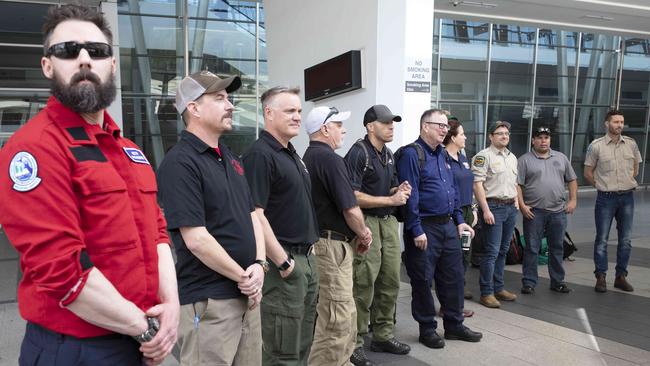Bushfires: Despite helpful rain, bushfire danger will ramp up again
The RFS is expecting an increased fire danger across several areas, most notably over the south coast and centre of NSW.

A week of rain across Australia has helped to significantly reduce the number of active blazes firefighters will be battling as dangerous conditions return this week.
The end to the calmer bushfire period comes as an 84-year-old man from NSW’s south coast died on Saturday morning, bringing the national death toll from the crisis to at least 29.
The man, described as “a true blue trooper” and “country boy”, died in a Sydney hospital nearly three weeks after he sustained burns as fires hit his Cobargo property on New Year’s Eve. His name has not been released.
His death was the 21st in NSW this bushfire season, with five dying in Victoria and three in South Australia.
On Sunday night, about 70 fires were burning across NSW, 20 of which were yet to be contained by authorities.
This figure dropped from about 110 the previous Sunday, when 40 fires in the state were burning out of control.
Rural Fire Service spokesman James Morris said the decline in fire activity was largely due to the “significant rainfall in different parts of NSW” experienced last week, although the rain caused its own problems for firefighters in some parts of the state.
“We received rainfall across a number of firegrounds, which is good news,” Mr Morris said. “From Jervis Bay to Queensland we saw moderate falls, which were heavier towards the north of the state, especially near the border. That helped us.”
He said several firefighters and brigades “did get a break but a lot took the opportunity to further work on containment lines ahead of worsening conditions this coming week”.
“Unfortunately we haven’t seen southern parts of the state get as much rainfall.”
Smaller rainfalls had “made containment very difficult” last week, he said. “There was very little moisture to fall and impact the dry fire fuel in those areas but enough rain to halt our exercises to backburn and minimise the fuel load.”
Mr Morris said the RFS was expecting an increased fire danger across several areas, most notably over the south coast and centre of NSW, with warnings likely to rise to severe on Wednesday and Thursday, when hotter, windier conditions will eventuate.
In Victoria, 14 fires were burning out of control on Sunday evening, as thunderstorms posed a risk of starting new fires in a state that has already had 1.4 million hectares burnt.
Despite showers on Sunday and Monday bringing the possibility of hail, predictions of damaging winds and dry lightning in the west of the state will be the centre of the Country Fire Association’s focus. “We’re looking at a couple of days where the key concern will be the impact of thunderstorms,” Luke Heagerty, CFA state control centre spokesman, said.
He said the storms could bring down trees and wash burnt debris around on Monday and Tuesday, before warmer temperatures raised the risk of new fires starting.
“We had a lull in fire dangers last week but there were days when fires flared up … we haven’t seen any significant change in fire numbers over the past week because of the size of them.
“We don’t expect to see some of those larger fires contained for a little while.”
South Australian authorities are still focused on containing the blaze that has ravaged Kangaroo Island, a spokeswoman from the Country Fire Service told The Australian.
“Basically we have Kangaroo Island as our main concern at the moment,” she said.
The CFS is expecting Wednesday to be a day of increased fire danger this week, in line with similar weather affecting other states.




To join the conversation, please log in. Don't have an account? Register
Join the conversation, you are commenting as Logout